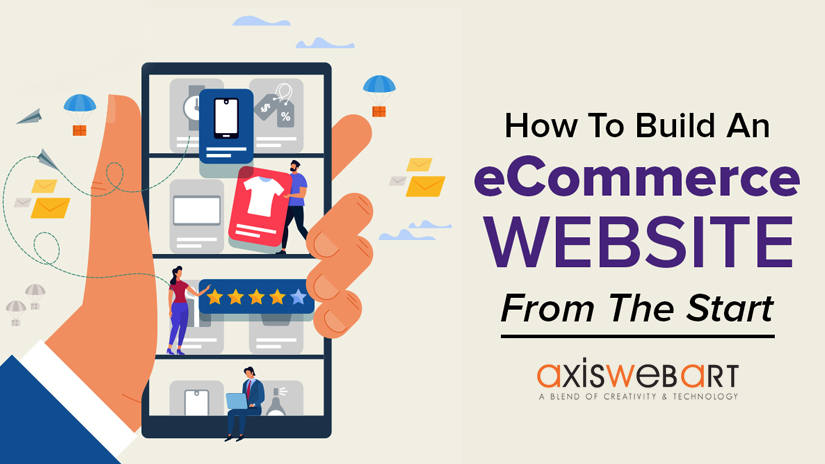In this Guide to Launch your first eCommerce Store we are going to explore all the options and steps required to set up an eCommerce store of your own. the eCommerce industry is the fastest growing industry and its growth has outpaced many traditional businesses. The worldwide increase in internet users and a significant increase in investment in the sector are driving factors behind this growth story. Paying online has become much easier with continuous technological advancements and it’s such an easier process that anyone with little technical expertise can easily do it.
With the emergence of mobile internet users, everything is within reach of buyers wherever they go with just a touch of a finger and they can explore every option before making their final choice for purchase. How amazing all this is and it’s still quite overwhelming to elders at the home.
We have seen the emergence of lots of new companies in recent years and lots of new startups coming up with interesting ideas every other day. All traditional businesses or retail stores are also coming up with their online shop.
While there are so many opportunities available and knowing that it’s going to flourish in the coming years, it’s a good idea to think of setting up an online store. Be it your traditional family business or it’s a stunning new idea, to sell online you need an eCommerce store. In today’s article, we are going to explore all possible options, steps, and things that you need to plan or keep in mind while developing an eCommerce web store. So here we go –
Define your business, Research your market – eCommerce Store
As applies to every other task we do, the very first step towards this is to do what you want to do. It’s important to spend some time and plan your idea. Think of the kind of product you want to sell online, who are your competitors, and what unique you are going to offer to your customers. All this research can also give a good idea about your brand name representing your unique values.
Book your domain name for the eCommerce Store
Once you formulate an idea about your store, it’s time to take some decisive steps towards launching your eCommerce store. Check out available domain options for your web store that highlight the brand, industry, and values of your business. Take the help of domain suggestion tools to find an appropriate domain for you.
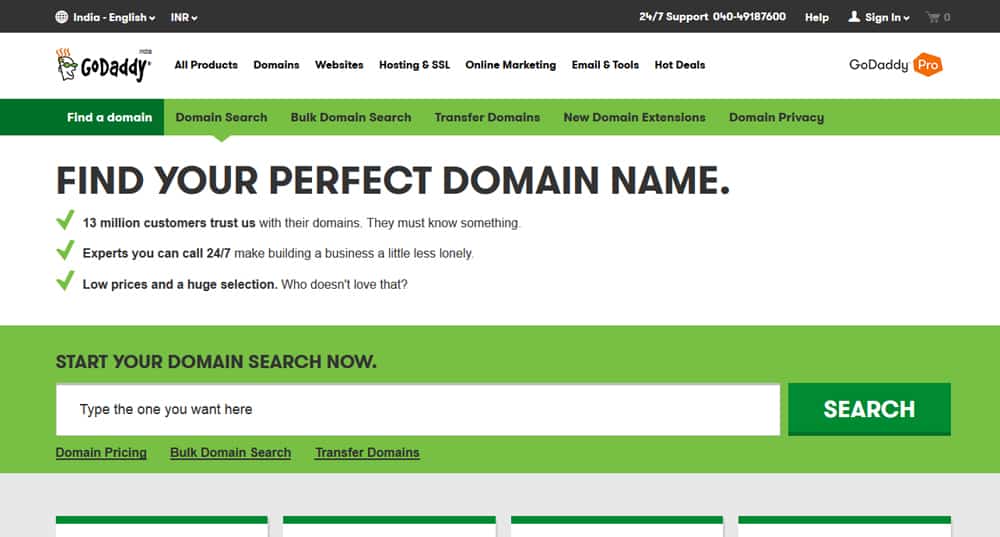
My personal recommendation is GoDaddy for domain registration. The reason is they know brands in the industry, offer a good discount and you can easily find a coupon code to get an additional discount at the time of renewal. Once finalized book your domain.
It goes for a minimum of 1 year but you can also book the domain for more than one year to show your seriousness about the business. Some search engine gives credibility to this factor in their search results.
Choose your eCommerce platform and package –
This is the most important decision you have to make. When it comes to an eCommerce platform, there are two types of solutions.
- Hosted Solutions
- Self Hosted Solutions
1. Hosted Solutions –
Hosted solutions are managed by companies that provide these solutions. This is something like your free WordPress blog where the entire script is hosted automatically by WordPress.org and you get a subdomain and admin control to manage all your blog posts. In this type of solution, you need to purchase a package from these companies, and based on your package a copy of that eCommerce script will be created and automatically hosted for you on their server.
You don’t need to bother about anything technical in this process. You can add your own purchased domain and you will get an easy-to-use admin interface to manage your store catalog, customers, orders, promotions, etc. You also get an option to choose available free and premium store templates that you can customize to match the basic look and feel of your brand.
When there is an online transaction, there are various security risks involved in the process. If you want to avoid taking all this headache, you can probably opt to go with a hosted solution. All popular provider gives lots of payment options these days and in most cases, you will get an option that you want to give your customers.
One limitation posed with this type of solution is: you get very limited options for customization and feature enhancement and addition in the future is not easily possible. You can do things within the boundaries set by the platform.
We have lots of options available in this category of eCommerce website development which makes the decision-making process a bit tough. We are exploring the top three options in this category –
a. Shopify –
When it comes to hosted eCommerce solutions, Shopify is my first choice and recommendation. It’s best for small to medium size eCommerce shops with limited catalog and operation. You can signup for a 14 days free trial to check out their wonderful features and honestly, it just takes a minute.
You can also check out examples of a store using Shopify. Check out their pricing and offering to choose a suitable plan as per your requirements.

Some key features –
- App Store: that gives you hundreds of apps to choose from to add additional features
- Plenty of Themes: Shopify gives you wide options for professional and nicely designed themes to choose from.
- Unlimited Products & Bandwidth: which not a common thing with hosted solutions
- Easy integration with shipping partners, warehouse/fulfillment center and dropshipping companies
- Mobile Apps
- Availability of Shopify experts who can help with anything you need
- Live Chat Feature
b. BigCommerce –
BigCommerce is another very popular hosted eCommerce solution among the top million sites and very popular among small to medium size organizations. Check out the showcase of the store using BigCommerce. Pricing of BigCommerce looks comparatively the same as Shopify, it offers a wider range of features on top of general eCommerce features.
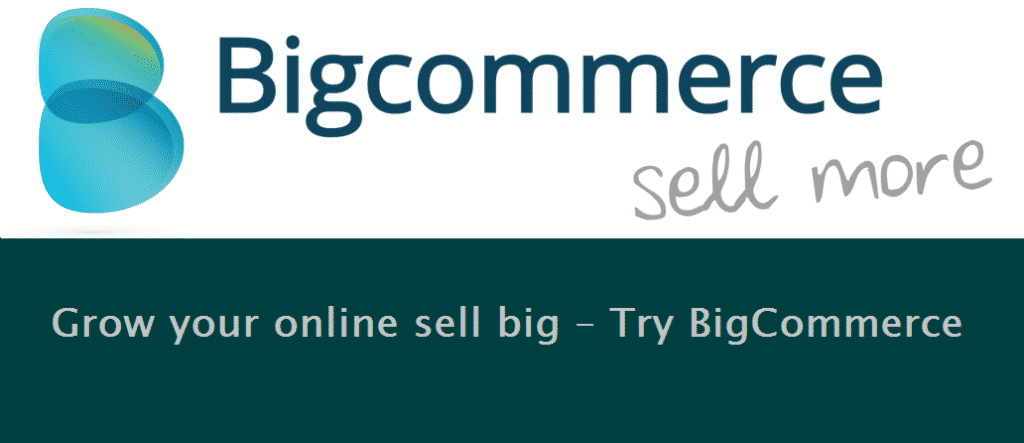
Some of them can be highlighted below –
- Real-time shipping quotes
- Gift Card
- 24/7 phone/mail/chat support
- Google Trusted Store certification assistance
- Easy integration with eBay, Google Shipping, and more
c. Yahoo Store for Small Business eCommerce
Yahoo Store has the largest market share among hosted eCommerce solutions for medium-sized businesses with a rank in the top 10,000 and top 100,000 sites. Yahoo was the first to offer a solution like this but its usage is slowly declining.
Yahoo Store does offer an impressive feature set with a good number of integration options with payment gateway, shipping partners, customer support, and inventory management. It also comes with unlimited products, storage, and bandwidth.
Yahoo is also a known big brand to go with and additional marketing benefits with yahoo ad clicks.
2. Self-Hosted Solutions
Self Hosted solutions are eCommerce open-source scripts that you can download and use for free. Apart from a domain, In this type of solution, you need to purchase hosting as well. You can download the script, upload it to your server and install it with few easy steps. Here you have full control over the scripts, you can modify them as per requirements and allowed by their license. There are lots of downloadable eCommerce open-source scripts but in this article, we are going to discuss the top three based on their overall features, flexibility, ease of use, and ease of customization.
a. Magento –
Magento is my first choice & recommendation when it comes to eCommerce website development for a client and it’s also a choice for lots of people around the world. The reason being the kind of features it offers to store owners, customers, and developers.

Some key reasons to think of Magento –
Wide Range of Features: Magento offers a wide range of features that can be good enough for any eCommerce store.
Extension Store: You can find a Magento extension for almost everything be it free or paid. Lots of extension developer and Magento partner keeps on adding an extension to Magento store and you can also get lots of options to choose from while searching for an extension for a particular feature.
Wide Range of Themes: You can easily find a nice Magento theme for almost every product industry. Installing and setting up the theme is also quite easy with available documentation.
Check out my article 5 Reasons to Develop Your eCommerce Website with Magento for more detailed insights on the topic. Hiring a professional Magento developer can be beneficial to help you through the entire store design and development.
b. WooCommerce –
Updated Statistics on built with shows that the current version of WooCommerce is used by 10.56% of online stores and by adding WooCommerce 2.3 its share goes way ahead of Magento. That’s quite impressive for a platform that is just 4 years old.
A big reason for its popularity is because of WordPress, A lot of people are already familiar with WordPress, and installing, configuring, and getting familiar with WooCommerce is just a task of a few minutes.
Benefits –
- Lightweight Application: WooCommerce is a very lightweight application that does not require a highly capable server compared to Magento and another platform.
- Feature Rich: Even Basic features of WooCommerce are above average and it can be further extended with available WordPress and WooCommerce plugins.
- Easy to set up: If you are familiar with WordPress, WooCommerce will take just 5 minutes to set up and get going.
- Hundreds of Theme – Wide rages of WooCommerce themes are available in both free and premium category
Check out our WordPress and WooCommerce development services if you need help with your store development with WordPress.
c. OpenCart –
OpenCart is another popular platform in this category with a market share of 2.60% at the time of writing this article. It has the cleanest default storefront. It’s easy to work with and allows editing of CSS from the admin section that makes the layout modification much faster and convenient.
Key Reasons to consider OpenCart –
- Lots of integrated shipping and payment options
- Availability of 13,000+ professional plugins.
- Many built-in integrations to get you started immediately.
- Download OpenCart here for free to get started
You should also explore other options available in both these categories and make a wise decision keeping in mind your business needs and future expansion plans. Someone might also suggest you go with a custom development but as per my experience, that is not advised to go with.
Decide how you will accept payment from Buyers
Payment options play an important role when it comes to eCommerce. You should explore all available options and made wiser decisions. See below a list of the option you should consider –
Credit/Debit Card/Net Banking – Credit/Debit card still holds a larger part of the online payment industry and it’s understandable owning the easy process of this type of payment. In the process of obtaining a payment gateway, you first need to have a merchant account in a bank in the name of your business or individual if you want to run the store in your own name.
Sometimes your bank can also provide you a payment gateway as well but that you need to check with your bank. A payment gateway is a service that links your bank account with your store and that way any payment received will be credited to your bank account.
The most popular payment gateway service worldwide is authorize.net and it comes automatically integrated with most of the hosted and self-hosted eCommerce platforms.
In India, the most popular ones are CCAvenues and PayU. Both these companies got good support and provide ready-made plugins for most of these eCommerce platforms which can be easily configured and you are ready to take payment online without any technical affords.
Digital Payment Methods – Apart from Credit/Debit Card another good and becoming a more popular way these days is the Digital payment method.
The most popular names in the series are Paypal and Google Checkout. Paypal offers a wide range of options and also allows your customers to pay with Credit/Debit cards.
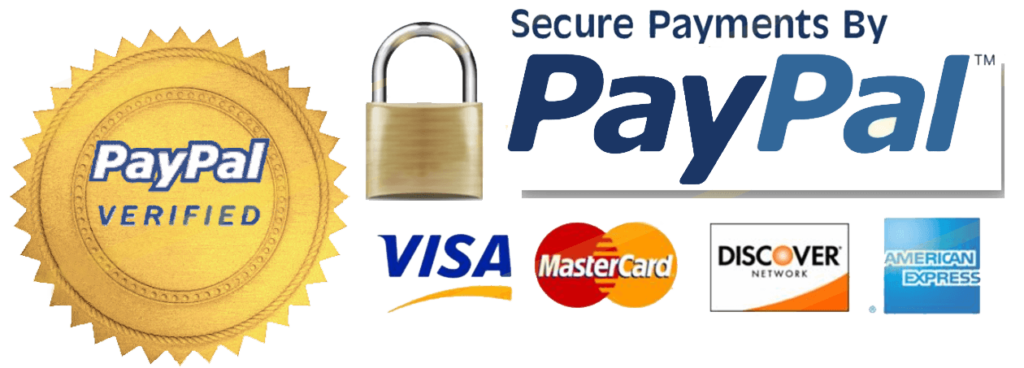
These are the quickest option to set up and get going. You only need to signup for an account with these services and most of these popular payment options come integrated with popular eCommerce platforms.
PayTM is getting very popular in India these days.
Host your store
By now we have explored all the options for every stage. Now it’s time for some real action to get your store up and running and ready to accept orders.
Once you make a decision about the eCommerce platform, one thing that is really going to matter is the hosting of the website. If you are going with the Hosted type of platforms then you don’t need to do anything at all about this. They will give you everything pre-hosted and installed. If you are going with a Self-Hosted platform then you need to purchase a trusted and robust hosting server.
Depending on your budget and reach of your marketing campaign which you have planned after the launch of the store, you need to select a hosting plan. We wish your campaign goes well and you got lots of customers coming on to your store in search of your great products. This is good but your hosting server needs to be good enough to provide optimum experience to all these visitors because slow performing website can have a bad impact on the mind of your visitors and that’s not going to be good for your newly launched store.
To avoid such a thing, you can go with a Virtual Private Server or a Dedicated server. Amazon Web Services (AWS) is another great option for you to check. This is a cloud-based service and if properly configured (with the help of some AWS expert) it can be the best option.
The greatest feature of AWS is its auto-scale mode. In Auto scale mode, serve resource is used or cloned as per the requirement of the current traffic. For example, if your current server resource is falling sort to tackle current traffic requirements then AWS will automatically create a clone of the server and divide the half of traffic to another instance and the moment traffic is reduced, the copied instance of the sever will be removed automatically. And… another beauty of this is that for this additional clone of server, you only pay for the period of time it was there.
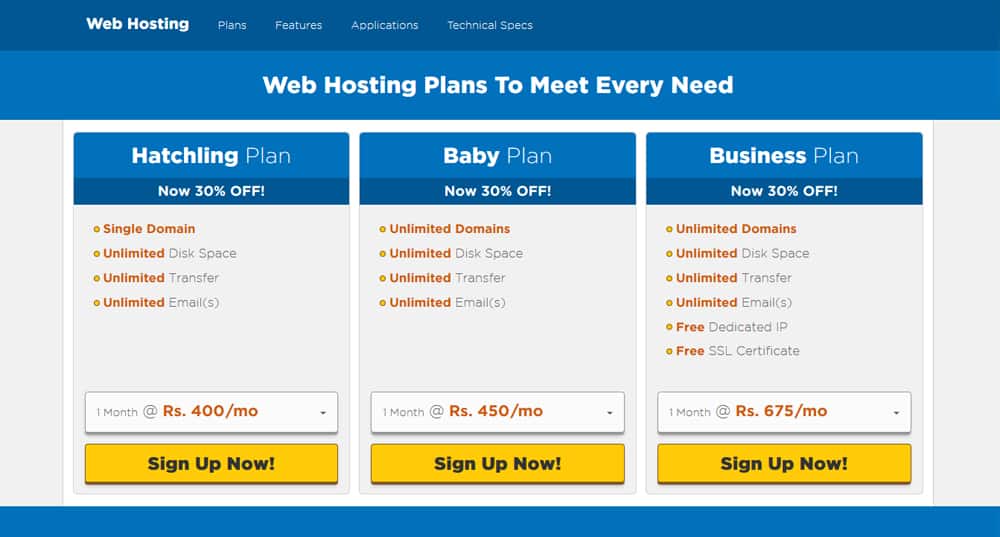
If your budget is limited, initially you can also go with a shared hosting solution. In such a case my personal recommendation is Host Gator. I have experienced better speed and performance on their shared host with a heavy platform like Magento.
Learn About the Laws affecting eCommerce & Security
There are various international laws for the protection and security of online transactions and customer information. Some standard laws that you need to know are –
- PCI standards and processes
- Payment Application Data Security Standard (PA-DSS)
- User data security standards in different markets
- The user of the Secure Sockets Layer (SSL)
Set up your Product Catalog
Once your domain, eCommerce platform, and hosting selection are done and you have your store running, it’s time to set up your product catalog on the store. Get familiar with the admin section of the eCommerce platform you have selected, explore options to add product categories, and add products with all information. Prepare images for your products, and optimize them for the web using tools like PhotoShop.
Prepare your product content in a nicer way that attracts search engines to get a better ranking in their search results. Set up general pages for an eCommerce store like privacy policy, your return policy, terms & conditions, about your store & its vision, customer support page in case they have any query about a product or they need some help placing an order.
Marketing and Promotions
Congratulations!! you have your store up and running at this stage. It’s time to let the world know that something stunning has just arrived and is ready to welcome you. It’s time for you to do some affords to spread the word. There are various options available for you to do so.
Create accounts on all popular social media websites and let people know about your new launch. Create a discount offer for the first order and send out a nice e-mailer to your contacts.
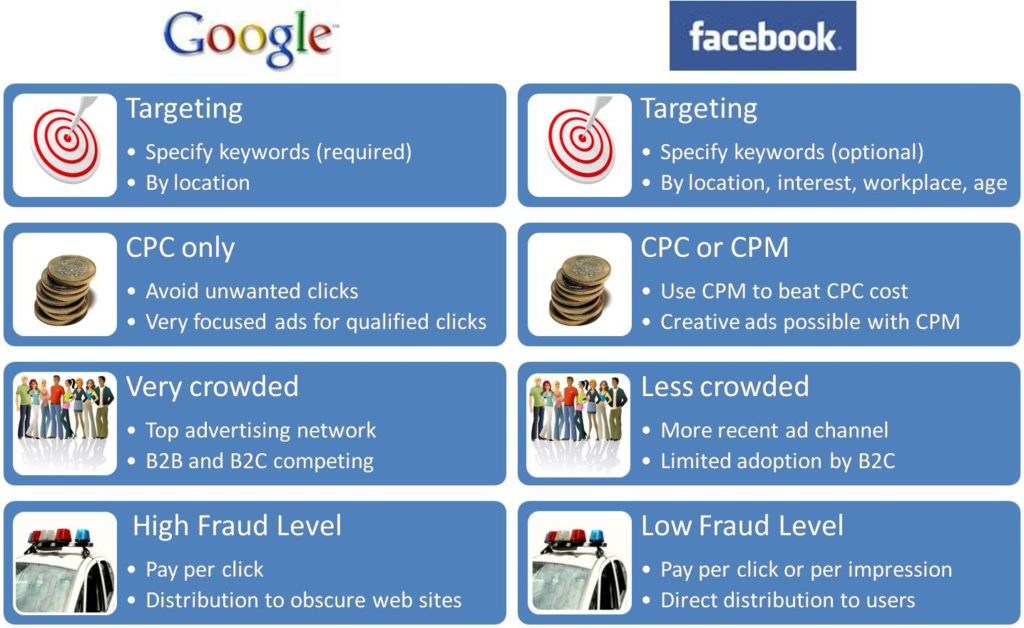
You can also try paid advertisements from Google Adwords and Facebook Ads.
Decide on your order shipment and fulfillment
Knowing that you have launched a new store and you are promoting it to generate sales. It’s important for you to plan and explore options for shipment of ordered items to the customer on time and they reach them intact.
Some important things that you need to consider at this stage are –
- Should you do the shipment of orders yourself or do you use some agency in your area?
- What are you going to charge the customer for shipment? Are you going to ship items for free, Free shipment above a certain order amount, free shipping in a particular geographical area, or Flat rate shipping for all customers are some modals you can think of?
- Do you need automated software for order notification to packing staff, packing labels, notification to shipment staff, or the shipment agency you hired?
- How are you going to allow customers to track their orders?
- What shipment companies you are going to tie up with?
Conclusion
eCommerce is a growing business and in this post, we have tried to explore basic steps and options available in a broader way. Completing the entire operation in one go is not easy for even professionals. But this article will give you a general idea about what you need to be prepared for launching an online store. You can also reach out to some E-commerce Website Development companies to help you set up the store.
Hope you enjoyed this Guide to Launch your first eCommerce Store, We would love to hear from you about your experience and strategies for developing an eCommerce store. Please share them in the comment box below.



